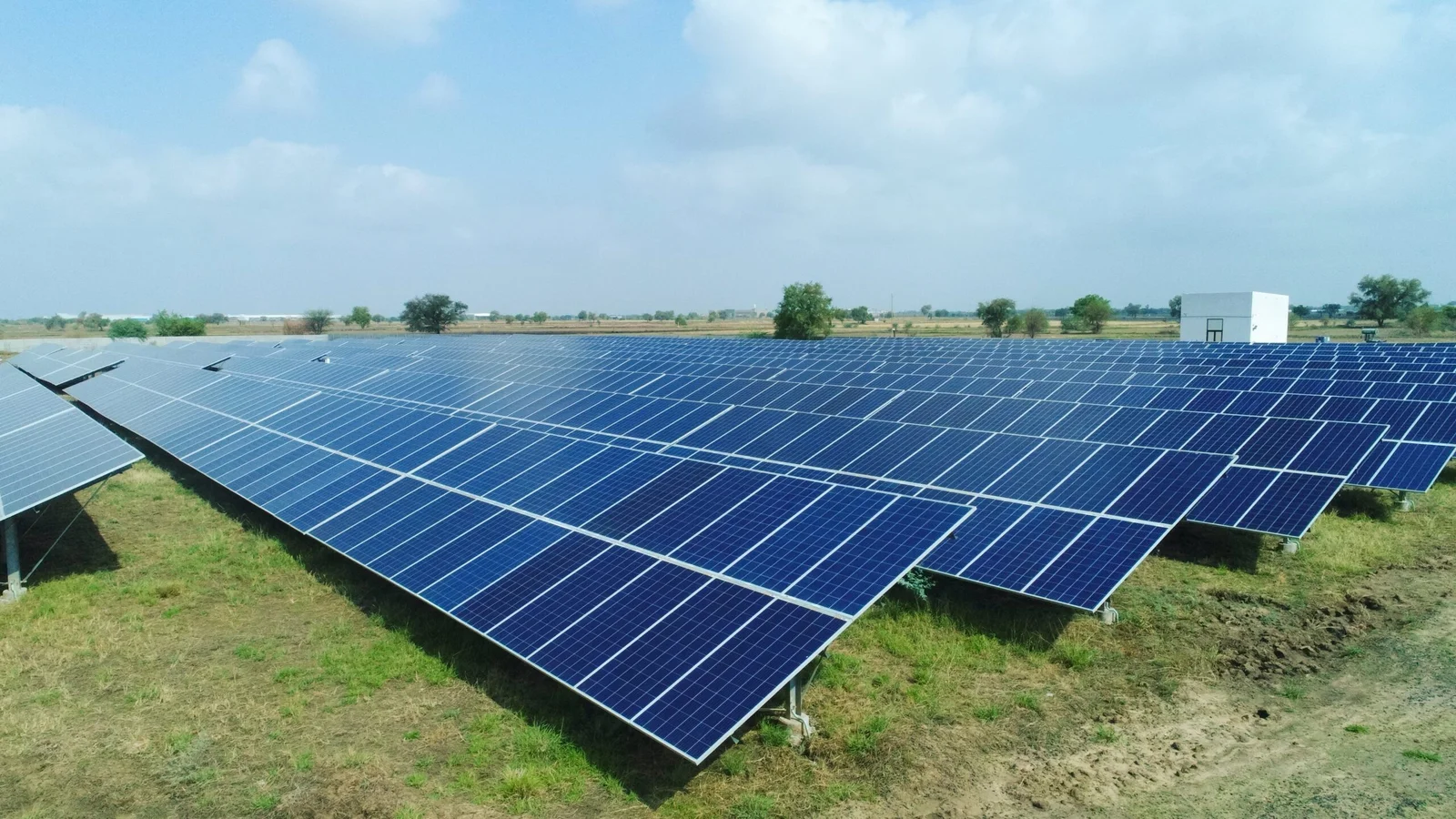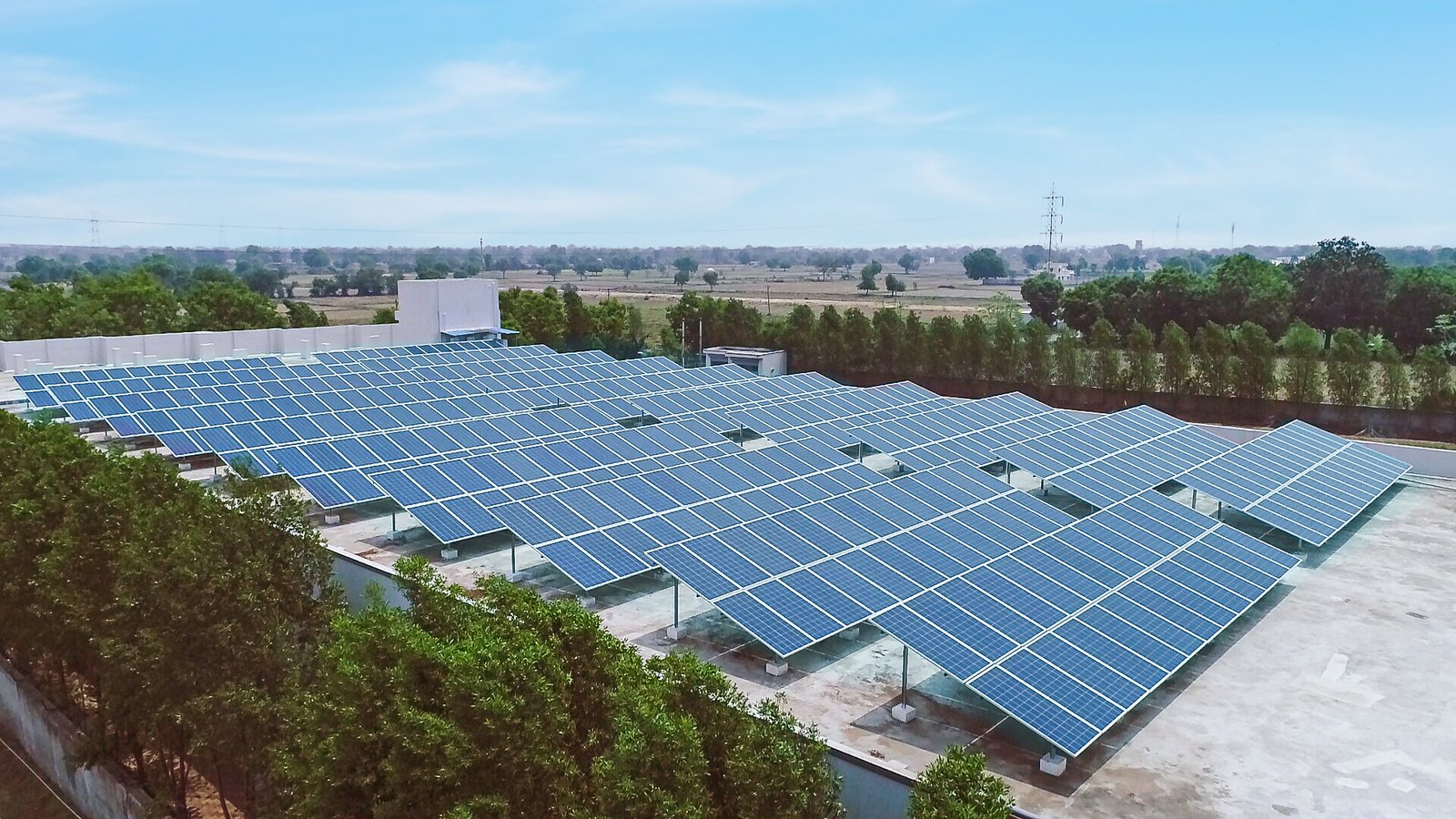As the world pivots towards sustainable energy solutions, commercial solar power plants have emerged as a key player in the transition. These installations, designed to meet the energy needs of businesses, factories, and large institutions, are not just an environmentally responsible choice but also a financially savvy investment. In this guide, we’ll explore the various aspects of commercial solar power plants, their benefits, how they work, and why they’re becoming increasingly popular among businesses globally.
What is a Commercial Solar Power Plant?
A commercial solar power plant is a large-scale solar energy system designed to generate electricity for commercial purposes. Unlike residential solar systems that are typically small and cater to individual homes, commercial solar power plants are expansive, often spanning large areas to produce significant amounts of electricity. These systems can power entire factories, office buildings, shopping malls, and even supply energy back to the grid.
How Does a Commercial Solar Power Plant Work?
The basic working principle of a commercial solar power plant is similar to any other solar power system. It harnesses sunlight through photovoltaic (PV) panels, which convert solar energy into direct current (DC) electricity. This DC electricity is then converted into alternating current (AC) through inverters, making it usable for commercial applications. The energy produced can be used on-site, stored in batteries, or fed into the power grid.
1. Solar Panels
The most visible part of the system, solar panels are responsible for capturing sunlight and converting it into electrical energy.
2. Inverters
Inverters play a crucial role by converting the DC electricity generated by the solar panels into AC electricity.
3. Mounting Systems
These structures support the solar panels, ensuring they are optimally positioned to capture maximum sunlight.
4. Battery Storage Systems
Optional in many commercial setups, batteries store excess energy for later use, ensuring a consistent power supply even when sunlight is not available.
5. Grid Connection
Many commercial solar power plants are connected to the grid, allowing excess energy to be sold back to the utility company.
Benefits
1. Cost Savings
Solar power can significantly reduce electricity bills by generating renewable energy that offsets what is used. One of the primary benefits of a commercial solar power plant is the significant reduction in energy bills. By generating their electricity, businesses can cut down on their reliance on expensive grid power.
2. Environmental Impact
Switching to solar energy reduces carbon footprints, helping businesses meet their sustainability goals. Solar energy is clean, renewable, and produces no greenhouse gas emissions during operation.
3. Energy Independence
Commercial solar power plants provide businesses with greater energy independence. By producing their power, companies are less vulnerable to fluctuations in energy prices and supply disruptions.
4. Government Incentives
Businesses can benefit from various government incentives and subsidies available in India, including subsidies, tax incentives, and favorable regulatory frameworks. These incentives help offset the initial investment and improve the financial viability of solar energy adoption. Many governments offer tax credits, rebates, and other incentives to businesses that invest in solar power. These incentives can significantly reduce the initial investment cost, making solar power even more attractive.
5. Increased Property Value
Solar panel systems can significantly increase a commercial property’s value. After all, renewable and clean electrical energy resource is a profitable investment. Commercial solar panel installation can deliver an excellent ROI (return on investment) by increasing your property’s market value. Properties with commercial solar power plants installed tend to have higher market values. The presence of a solar energy system can be a strong selling point for potential buyers, who see it as a long-term energy cost-saving solution.
6. Brand Image
Embracing solar energy can enhance a company’s brand image. Consumers are increasingly favoring businesses that demonstrate environmental responsibility, and investing in a commercial solar power plant is a visible commitment to sustainability.

Types
Commercial solar power plants come in various types, depending on the specific needs and constraints of the business.
1. Rooftop Solar Power Plants
Ideal for businesses with large roof spaces, rooftop solar systems are installed on the roofs of commercial buildings. They make use of otherwise unused space and can be scaled according to the size of the roof.
2. Ground-Mounted Solar Power Plants
Ground-mounted solar power plants are mostly used for commercial purposes of solar electricity. These solar power plants require a huge area of land to set up solar panels that can capture enough sunlight to generate the required units of electricity for sale. These are installed on the ground, typically in open areas near the business. Ground-mounted systems are often used when roof space is insufficient or when the business requires a large amount of energy.
3. Off-grid solar power systems
Off-grid systems are the most common solution for residential and commercial PV applications. These systems can power a single home or multiple individual homes. Off-grid PV systems require no grid connection, meaning they will only produce energy during daylight hours when the sun is shining.
4. Floating Solar Power Plants
Although less common, floating solar systems are installed on bodies of water, such as reservoirs or ponds. They are ideal for businesses located near water sources, offering a unique solution when land is limited.
Steps to Implementing a Commercial Solar Power Plant
1. Site Assessment
The first step involves evaluating the site to determine the feasibility of installing a commercial solar power plant. This includes assessing the available space, sunlight exposure, and local weather conditions.
2. Design and Engineering
Once the site is deemed suitable, the next step is designing the solar power plant. This includes selecting the appropriate type and number of solar panels, inverters, and other components.
3. Permitting and Approvals
Before installation, businesses must obtain the necessary permits and approvals from local authorities. This process can vary depending on the location and the size of the installation.
4. Installation
The actual installation of the solar power plant involves setting up the panels, inverters, and other equipment. This step requires skilled professionals to ensure the system is installed correctly and safely.
5. Connection to the Grid
If the system is designed to feed excess energy back into the grid, a connection must be established with the local utility company. This may involve additional equipment and agreements with the utility provider.
6. Monitoring and Maintenance
After installation, the system must be regularly monitored to ensure it operates efficiently. Maintenance is relatively low, but periodic inspections are necessary to keep the system in optimal condition.
Financial Considerations
Investing in a commercial solar power plant requires careful financial planning. However, the long-term benefits often outweigh the initial costs.
1. Initial Investment
The cost of installing a commercial solar power plant can be substantial, depending on the size and complexity of the system.
2. Return on Investment (ROI)
Solar power can be a good financial investment for businesses, as most recover their initial investment within three to five years. The average ROI for commercial solar panels in 2024 is 16.2%, but this can vary depending on several factors. The average payback period is 9.5 years.
3. Financing Options
Various financing options are available to businesses, including solar loans, leases, and power purchase agreements (PPAs). Each option has its advantages and should be considered based on the company’s financial situation.
4. Operational Costs
Once installed, the operational costs of a commercial solar power plant are relatively low. Maintenance is minimal, and the system can operate for decades with little intervention.

Future Trends in Commercial Solar Power Plants
The future of commercial solar power plants looks promising, with several trends shaping the industry.
1. Technological Advancements
Continuous improvements in solar technology are making commercial solar power plants more efficient and cost-effective. Innovations such as bifacial panels, which capture sunlight on both sides, and advanced inverters are pushing the boundaries of what solar energy can achieve.
2. Energy Storage
The integration of battery storage systems with solar power plants is becoming more common. These systems allow businesses to store excess energy for use during non-sunny periods or peak demand times, further enhancing energy independence.
3. Smart Grid Integration
As smart grid technology advances, commercial solar power plants can become an integral part of the energy ecosystem. Businesses can participate in demand response programs, selling power back to the grid during peak times and earning additional revenue.
4. Decentralization of Energy
The trend towards decentralized energy generation is gaining momentum. Commercial solar power plants are a key component of this shift, allowing businesses to produce and manage their electricity rather than relying solely on centralized power plants.
Conclusion
Commercial solar power plants are a viable and increasingly popular solution for businesses seeking to reduce energy costs, enhance sustainability, and gain energy independence. As technology advances and costs continue to decrease, more companies are expected to adopt this clean energy source. Investing in a commercial solar power plant is not just a financial decision; it’s a commitment to a sustainable future, positioning businesses at the forefront of the global shift towards renewable energy.



